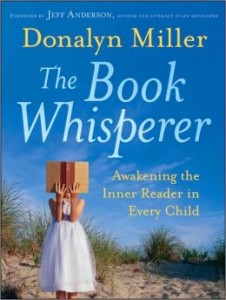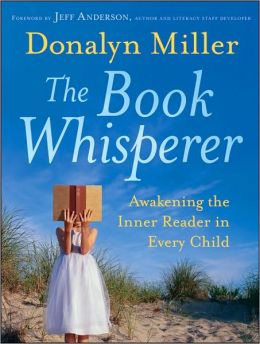
A few weeks ago, I wrote an article about the highlights from my reading of the beginning of Donalyn Miller’s The Book Whisperer. It has been many years since I have been so touched and so inspired by my professional reading. Throughout the book, two themes emerge: as literacy teachers, we must promote, model, and foster an authentic love of reading and we must allow time and lots of it for students to read independently in class. Miller reminds us that our ultimate goal is not to create students who pass “the test” but to create life-long readers thinkers, and learners.
How can teachers motivate even the most reluctant of readers? How can teachers set the tone from day one that reading is fun and enjoyable? Miller cites many concrete examples throughout the book. Her voice and style is encouraging and motivating for teachers. After reading the book, one is left thinking and reflecting, “Hey! I can do this!”
Ways to Establish a Classroom Community that Promotes and Embraces Reading
· On the first day of school have a “Book Frenzy”. Let students select books from the classroom library for in-class and for reading at home. Have an array of varying genres and themes and allow students to choose the books they are interested in reading. And then, let them read! As a result, you will set the tone that reading is prominent ,and this activity allows you to interact with students and get to know a little about them. I can think of no other important activity such as this. Discussing classroom rules and procedures can wait!
· Allow for student choice, which research shows is not only the number one motivator for reluctant male readers, but for all students. When students have the freedom to choose their own books, it empowers them, strengthens their self-confidence, rewards their interests, gives them control, and promotes a positive attitude about reading. Miller mentions that she does not “micromanage” their reading choices and allows students to choose books that are too hard or too easy. Why? Because if readers have an invented interest in a book they will read it, and isn’t that the ultimate goal? There will be plenty of time during the remainder of the school year to nudge students toward reading material that is more on their level or that you think they need to read to meet curricular standards. However, Miller states, “Listen to what your students need- don’t tell them what you think they need to hear.”
· Show students that reading is fun and engaging. To accomplish this, allow students to make choices, to abandon books that are not appealing or too difficult. Show them that reading is often done for pleasure, not just for work. The goal of reading is not to complete a book report, take a quiz, complete worksheets, or vocabulary activities. The goal is to read, enjoy it, and learn from it.
· Administer reading interest surveys, multiple intelligence assessments, informal and formal reading assessments to allow you to successfully match readers to books.
· Snatch every spare minute you have to allow students to read independently. This includes having students read at the beginning of class instead of having them complete morning work, a warm up, or “bell ringer” work- worksheets, DOL, etc. For students who finish their work early, instead of having them complete “fast finisher” work- again worksheet or centers type activities, let them read! If your class is interrupted by a phone call or visitor, teach students that they are to pull out their books and read until you are able to resume teaching. Condition students to carry a book wherever they go.
Because reading has more impact on students’ achievement than any other activity in school, setting aside time each day for reading must be the first activity we teachers write on our lesson plans, not the last.
(Miller p. 52).
Are you intrigued about how Miller achieves all this plus also requires students to read forty books a year? Are you wondering what types of activities she does require students to complete to monitor their progress, to assess them, to have them interact with their reading, and to prepare them for the state test? You can read this and more in The Book Whisperer. If you have not read it, I would highly suggest reading it at the beginning of this new school year. It will transform your teaching and bring a breath of fresh air to your teaching, even if you are an old “dog” like me! For one, is never too old to learn a few new tricks.
Disclaimer: This book was the possession of the reviewer. Neither The Educator’s Room nor the reviewer received any compensation for this review. The opinions contained in this review are those of the reviewer alone and were written free of any obligation or agreement with the publisher. If you have any questions regarding book reviews, see our full disclaimer or contact The Educator’s Room Book Review Editor.
[/fusion_builder_column][/fusion_builder_row][/fusion_builder_container]




